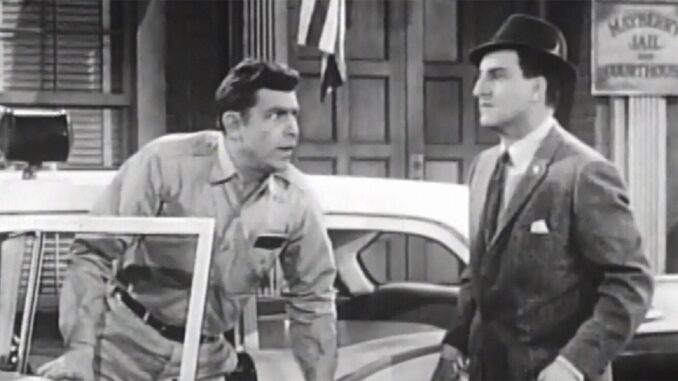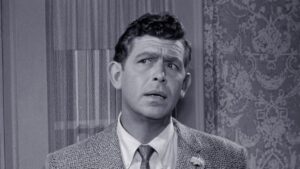
Talent agent who guided Andy Griffith dies
Richard O. Linke, the talent manager who helped transform Andy Griffith from a high school music teacher into an exemplar of folksy American small-town values on one of the most successful television shows of the 1960s, died on Wednesday at his home on the island of Hawaii. He was 98.
His daughter, Nanci Linke Ellis, confirmed his death.
Linke all but discovered Griffith. He gave him entree to Broadway and Hollywood and collaborated with the producer Sheldon Leonard to create The Andy Griffith Show, which stamped Griffith indelibly as Andy Taylor, the judicious, widowed sheriff who dispensed commonsensical wisdom in the fiction town of Mayberry, N.C.
Linke helped make Griffith’s preciate it a household phrase. He later did the same with the elongated Goll-ly! of another client, Jim Nabors, a lounge singer with a booming baritone who was introduced to a national audience on Griffith’s show in the role of the bumpkin Gomer Pyle.
“The Andy Griffith Show” and later Matlock, on which Griffith starred as a homespun but deceptively savvy defense lawyer, were network television staples for 17 years.
Long before he became a television personality, Griffith, transplanted from North Carolina to New York, had breakout roles on Broadway, in No Time for Sergeants in 1955, and in film, in A Face in the Crowd, in 1957. In that movie, written by Budd Schulberg and directed by Elia Kazan, he played Lonesome Rhodes, a hillbilly singer who metamorphoses into a megalomaniacal television personality.

Linke and Griffith began as an unlikely pair: one a growing New Jersey-born Times Square press agent with a bevy of celebrity clients, the other a small-town Southerner skeptical of Northerners. (His teeth were too close together was how Griffith first described Linke.)
But they were inseparable for nearly four decades, and Griffith credited Linke with launching and sustaining a show business career that otherwise might never have gone beyond regional radio.
He led me to agents, he personally took me to auditions, Griffith told The New York Times Magazine in 1970. If there is ever a question about something, I will do what he wants me to do; had it not been for him, I would have gone down the toilet.
Linke was handling publicity at Capitol Records in 1953 when he became captivated by What It Was, Was Football, a recorded comedy routine on which Griffith narrated a football game from the perspective of a flummoxed first-time spectator. Linke heard it late one night when , through a crystal-clear sky, his radio picked up the signal of a distant station in the South.
Linke and Hal Cook of Capitol, who had received a copy of the record separately, flew to North Carolina. They bought the rights to the record for the label for $10,000 and negotiated a contract with Griffith that called for him to receive $300 a week.
Linke signed on as Griffith’s personal manager while still working for Capitol and eventually became his business partner.
He introduced Griffith to Abe Lastfogel at the William Morris Agency, who booked him on Ed Sullivans television variety show, Toast of the Town, following a trained camel act, hardly the ideal lead-in.
Griffith survived his debut, and his career soared, especially when Leonard cast him as Sheriff Taylor and named the show after him. (Linke was associate producer at the time.) “The Andy Griffith Show” also featured the comic actor Don Knotts as Griffith’s neurotic deputy, Barney Fife; Ron Howard as his son, Opie; Frances Bavier as his maiden Aunt Bee; and Nabors as Gomer, the goofball gas station attendant.
In promoting Nabors, Linke followed a formula that he would successfully pursue with a number of clients: taking a relatively unknown artist and introducing him as a minor character on a successful series.
